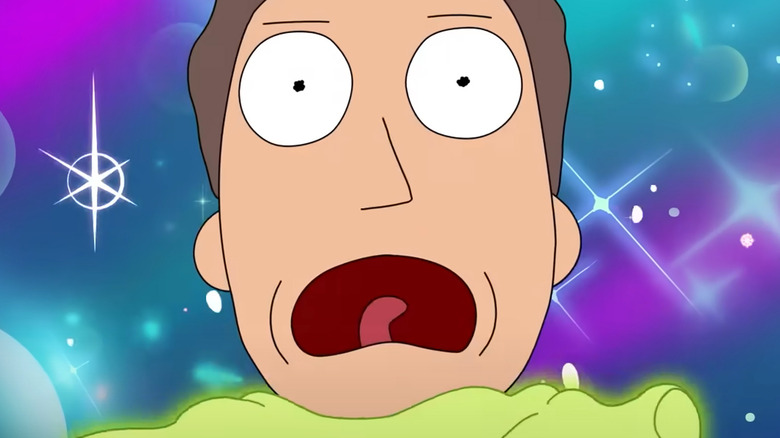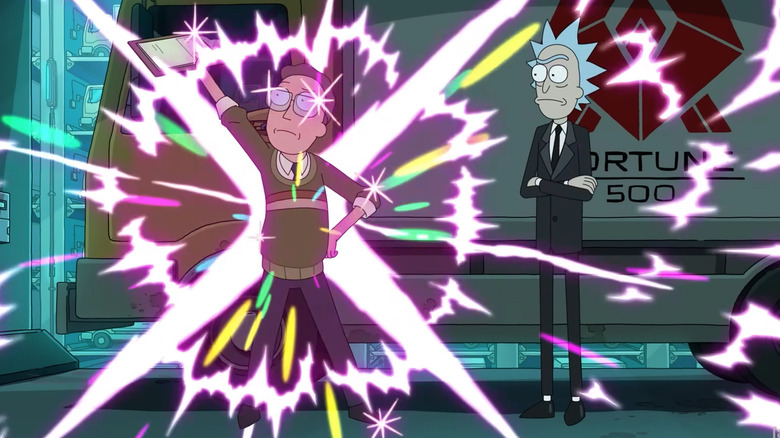Everything Rick And Morty Fans Now Need To Know About Magical Girl Transformations In Anime
"Rick and Morty" isn't shy about showcasing its anime influences from time to time. Perhaps most notably, as teased in a trailer for Season 5, the episode "Gotron Jerrysis Rickvangelion" is full of nods to popular anime series. Its title, for instance, is a take on the landmark, psychologically-dense mecha anime "Neon Genesis Evangelion," whereas its giant robots are inspired by that and other mecha shows like "Voltron." It even features the return of an unfortunate character first confirmed in a "Rick and Morty" Season 5, Episode 7 leak named Naruto, after the hit shonen anime franchise.
Dedicated "Rick and Morty" fans, meanwhile, should be familiar with a series of noncanonical anime shorts released through Adult Swim's YouTube channel. In fact, a 10-episode "Rick and Morty" anime is now on its way helmed by Takashi Sano, who both directed two "Rick and Morty" anime shorts and the 13 episode anime series "Tower of God."
Furthermore, in Season 6, Episode 5, Rick (voiced by Justin Roiland) activates an ability that outfits Jerry (Chris Parnell) in sharp business attire, animated on-screen in a manner reminiscent of a magical girl anime transformation. Rick then breaks the fourth wall, claiming that this sequence will save the show's animators money should they ever need to reuse it, which they naturally do later on in the episode. The significance of Rick's comment and just what this transformation sequence is parodying may be lost, however, on viewers unfamiliar with the magical girl anime genre.
Magical girl transformation sequences are an animation hallmark
In a history of the magical girl genre on Anime News Network, authors Stephanie Donaldson and Jacki Jing characterize stylized transformations as one of the defining hallmarks of magical girl series. For example, in "Sailor Moon," which is by all accounts the most well-known magical girl anime, its protagonists transform from everyday schoolgirls into superpowered warriors in sparkly, stylized, surreal sequences on a regular basis. These sequences have not just persisted in later examples of the genre like "Puella Magi Madoka Magica," but influenced Western shows like "Steven Universe" as well.
A piece by Ryan Khosravi on Digg highlighting the queer history of magical girl transformations attributes the development of such sequences to the massively influential "Astroy Boy," which includes repeated stock footage used across multiple episodes as a cost-saving measure. Magical girl transformation scenes are not just a genre convention, then, but reused in this manner to reduce the amount of new animation needed for individual episodes.
So, the repeated transformation in "Rick and Morty" Season 6, Episode 5 effectively functions on two levels. First, on the surface, drab dad Jerry morphing in a manner typically associated with fashionable girls is an ironic subversion. Then, Rick's fourth-wall-breaking knowledge of the money the scene will save the show is a knowing nod to the rigors of the notoriously laborious animation industry, and how magical girl series historically alleviated some of the strain on animators and producers with their recurring sequences.

